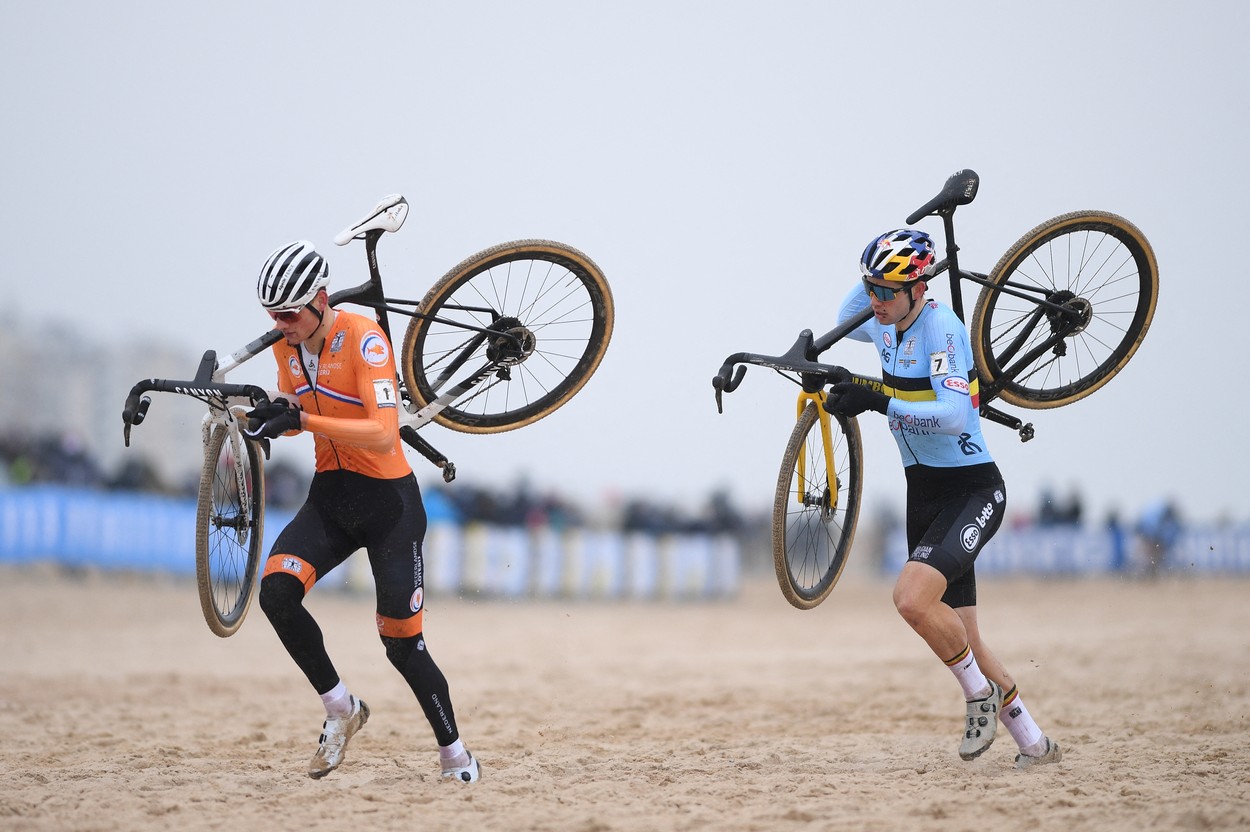But before you put on your swimming suit and apply the sunscreen, read these five tips on cycling on sandy beaches and how to make sure you will be able to return by your bike as well.
Tip 1: Not all bikes are made equal
Unfortunately, if you only have a road bike, riding on the beach will be pretty much impossible. It will be far easier to carry your bike at that point rather than trying to conquer the dunes. The same goes for a rocky beach, where it will be a bit less complicated but still too much of a hassle. Your best bet, if you plan to make it a regular occurrence, is to get a Fat bike. Its 4-inch wide tyres will prevent you from sinking into the sand, and lessen the effort needed. The fatter the wheel, the easier it would be.
If, however, that’s a one-time occurrence, you can go with a mountain bike. Put on your winter (mud) tyres and go for as wide ones as your bike can handle. Go for lower tyre pressure as the more tyre surface touches the sand, the better the grip will be, and, naturally, your entire ride will be easier.
Tip 2: Keep it to lower gears
When riding on soft sand, be sure the bike is at a lower gear. This will reduce the chance of your rear wheel getting stuck in the sand due to the higher torque. It will be frustrating at first but at least you will be moving and staying on the bike.
Furthermore, keeping a constant pace and avoiding touching the breaks and shifting gears is a must. Don’t worry. The moment you stop pedalling, you will instantly stop. If you’re going down a dune and your speed increases, just lean backwards and slightly touch the brake lever.
Tip 3: Maintain a proper position
Speaking of weight shifting, when you get on the sand, you’ll instinctively want to shift your weight to the front. Don’t. This will only slow you down, and in some rare cases, you might even flip over. Instead, try to stay on top of your bike, sitting on your seat and leaning slightly to the rear. By this, I don’t mean to shift the centre of weight to the rear wheel but only to give your back tyre some additional grip.
Standing up on your bike will instantly bury your wheels, and the only thing you will gain is a higher pulse. Furthermore, when pedalling standing up, your entire balance is gone, and that’s a recipe for falling while riding on sand.

Tip 4: Plan your manoeuvres ahead
When riding on sand, sharp turns are not just inadvisable but entirely impossible. Planning your manoeuvres ahead is the only way to switch directions. It would be best if you could do it with minimal tyre turning. Instead, use counter pressure and lean your body, so you can use the sand to change directions. If you turn your tyre quickly, you will dig into the sand and most probably crash.
Tip 5: How to keep your bike safe when on the beach
There are several ways to make sure your bike is safe when locked on the beach. Your first task should be to lock it somewhere you can see it. A volleyball pole is a good idea if no one is playing. Obviously, if someone wants to use the court, you will have to move your bike.
You can lock it on an unused lifeguard station. Even if there are lifeguards at the post, ask them if it would be a problem to lock your bike there. If they refuse, don’t argue but go to the next post.
Whenever you’re going inside the water, ask a neighbour or someone close to you to keep an eye on the bike for the next 10-15 minutes. Usually, people don’t mind doing it, and afterwards, they ask you to look out for their stuff while they are going for a swim.
Bonus Tip: Give your bike a proper wash afterwards
Riding on sand is one of the hardest conditions for your bike. The sand is abrasive, the salt water is corrosive, and the fine dust particles will get everywhere. EVERYWHERE! So, when you’re back from the beach, make sure to clean your bike thoroughly. I’m not a huge fan of power washers but this is one of the rare cases when using one is the only option.
After you’ve washed away all the dust and sand with clean water, lube everything good, especially your chain. Don’t cheap out on the lube. It will prolong your bike’s life significantly.
Going to the beach with your bike is not for everyone
When all is said and done, going to the beach with a bike is a cool and fun idea until you get there. Naturally, it’s something you should do from time to time but, in general, it’s way too much work to keep your bike clean and maintained afterwards and, to be honest, fighting against the dunes is not everyone’s cup of tea.




